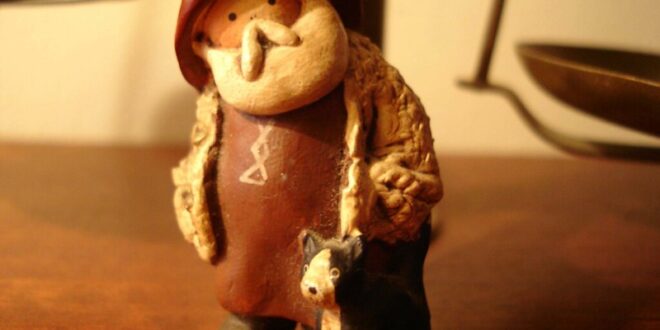Goblins Mythology: The Wandering Spirits
Goblins have been a part of European legend and lore for centuries. Stories of these mischievous creatures span from Europe to Japan. These creatures themselves are described in many different ways throughout the ages, from being invisible to human-sized green monsters. No matter what they look like, many of these tricky creatures have similar personality traits.
The origin story of the goblin symbolism is a foggy one. Some sources say that the first goblins were made in France, Greece, or Great Britain. Other sources say that these creatures were descended from fairies or gnomes.
Others even say that these creatures are poltergeist-like creatures instead of living in the physical world. Another theory on how goblins came to be is that when terrible pagans died, their spirits became goblins. This could match up with the goblins being almost like ghosts theories.
The Description Of Goblins
A goblin’s looks have received different descriptions throughout the centuries. The most common theory is that these creatures are about the height of midgets with ugly greenish skin color. They look rough and dirty hence likely to get into trouble and cause the same. In other cultures, the goblin can be like a wisp, like a ghost.
People believe that even when in spirit form, these creatures would be smaller than adult humans. However, some stories talk about goblins that were the height of humans and could even easily shape-shift to blend in with humans. Depending on their personality, these goblins were the kindest or most dangerous.
Another type of goblin, the redcap, was said to be rather tiny. They wore caps that they would dye red with people’s blood that they killed, giving them their names. Luckily, once the dye in their caps faded, they died.
No matter how these creatures’ physical features were described in the stories, the legends of how they acted were similar much of the time. They were said to be mischievous and troublesome creatures. They often liked to pull pranks on humans. These creatures could be harmless by doing little things like moving something or banging on pots and pans. Sometimes they would harm or even kill people. Goblins, redcaps especially, are popular for killing humans when they go on their land.
The Daily Life Of These Creatures and Their Significance
Goblins lived in caves or heavily wooded areas. Parents would tell their children to beware of these places or else the goblins would hurt them. Parents also told their children that if they misbehaved at home, then the goblins would kidnap them.
There were many legends about these creatures kidnapping children and babies, and sometimes even full-grown women, and hiding them away in their homes, never to be seen again. This easily could have been the basis for the goblins in the movie The Labyrinth. However, sometimes they were not seen as terrifying creatures, but instead as helpful little people. The goblins could punish children if they did something wrong but also reward them when necessary.
Although in most of the cultures where the goblin myth was told, goblins were seen as terrible creatures, the Japanese tengu was often a helpful type of goblin. These goblins would look much more like people than their Western counterparts from Europe. The tengu was more likely to help a lost traveler to find their way, while an English redcap was much more likely to trick the lost person and later kill and possibly eat them.
Goblin Mythology: Summary
Overall, it was best to avoid these tricky creatures, as they were much more likely to cause people harm. Even in today’s stories and movies, people consider goblins to be troublesome to whoever they encounter, sticking to old myths.
 Sun Signs Everything Under The Sun!
Sun Signs Everything Under The Sun!
